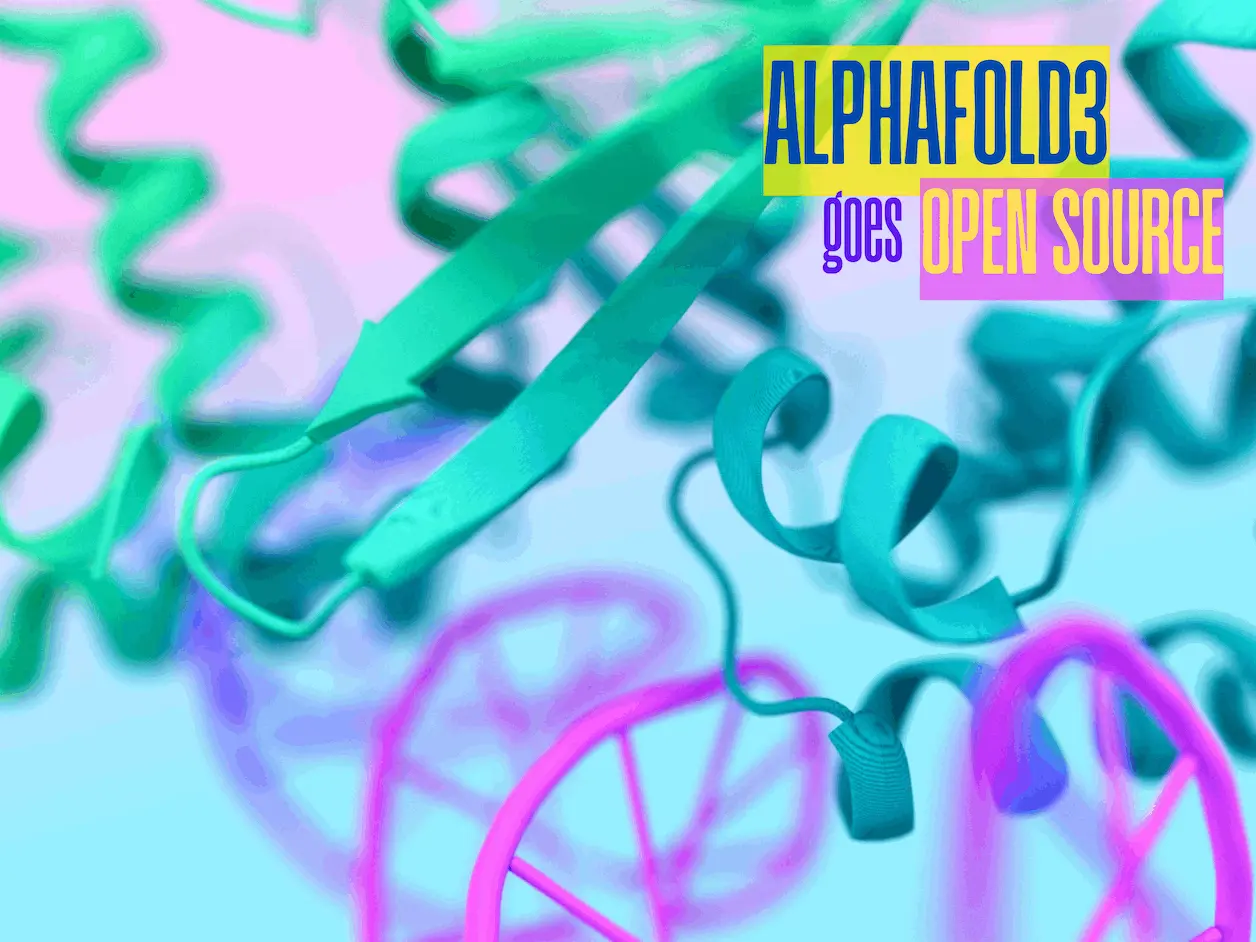In a significant move for the scientific community, Google DeepMind has finally released the open-source code for AlphaFold3, their groundbreaking protein structure prediction tool. This decision, announced on November 11, marks a crucial shift in accessibility to cutting-edge AI technology in biological research.
The Journey to Open Source
The path to this release hasn’t been straightforward. Initially, DeepMind faced criticism for restricting AlphaFold3 to a web server, mainly because it prevented scientists from studying protein-drug interactions. This decision, while aimed at balancing research access with commercial interests, sparked debate about scientific reproducibility and transparency.
What’s New in AlphaFold3?
AlphaFold3 stands out from earlier versions with its new trick. It doesn’t just model individual proteins; it predicts the way proteins deal with different molecules, which is a crucial advancement for drug discovery and understanding complex biological processes.
Current Access and Limitations
The release comes with some conditions:
- The code is available for non-commercial use
- Training weights are accessible only to academics upon request
- Commercial applications, particularly in drug discovery, remain restricted
The Competitive Landscape
DeepMind’s initial reluctance to release the code sparked innovation elsewhere:
- Chinese tech giants Baidu and ByteDance developed their own versions
- Chai Discovery created Chai-1
- Ligo Biosciences released a restriction-free version (though with limited capabilities)
- OpenFold3 is in development, promising full open-source accessibility
Why This Matters
The open-source release of AlphaFold2 previously led to remarkable innovations, from cancer research to reproductive biology. With AlphaFold3’s enhanced capabilities, we can expect even more groundbreaking applications.
Looking Forward
As John Jumper, AlphaFold team lead and recent Nobel laureate in Chemistry, notes, we’re likely to see both successes and failures as researchers experiment with the tool in “weird ways.” This experimentation is precisely what drives scientific progress.
The Bigger Picture
This release raises important questions about the relationship between commercial AI development and academic research. As AI becomes increasingly central to scientific discovery, finding the right balance between intellectual property protection and scientific openness will be crucial.
For the scientific community, this release represents more than just access to a powerful tool – it’s an opportunity to push the boundaries of what’s possible in protein science and drug discovery. The real excitement lies in seeing what innovations will emerge from laboratories worldwide now that this technology is more accessible.
Article Source: Reference Article | Software code can be downloaded from GitHub for non-commercial applications.
Follow Us!
Learn More:
Dr. Tamanna Anwar is a Scientist and Co-founder of the Centre of Bioinformatics Research and Technology (CBIRT). She is a passionate bioinformatics scientist and a visionary entrepreneur. Dr. Tamanna has worked as a Young Scientist at Jawaharlal Nehru University, New Delhi. She has also worked as a Postdoctoral Fellow at the University of Saskatchewan, Canada. She has several scientific research publications in high-impact research journals. Her latest endeavor is the development of a platform that acts as a one-stop solution for all bioinformatics related information as well as developing a bioinformatics news portal to report cutting-edge bioinformatics breakthroughs.















